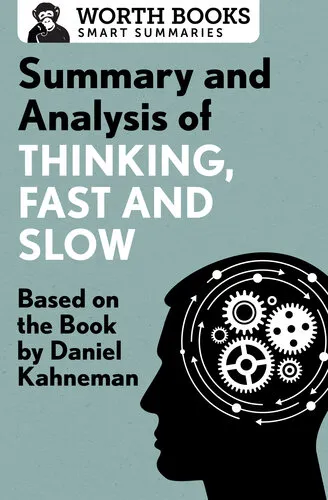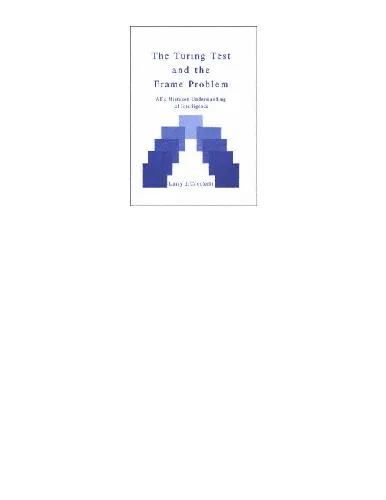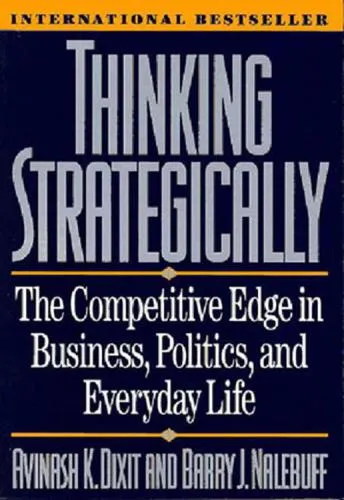Summary and Analysis of Thinking, Fast and Slow: Based on the Book by Daniel Kahneman
3.5
Reviews from our users

You Can Ask your questions from this book's AI after Login
Each download or ask from book AI costs 2 points. To earn more free points, please visit the Points Guide Page and complete some valuable actions.Related Refrences:
Introduction
Daniel Kahneman’s groundbreaking work, "Thinking, Fast and Slow," offers an illuminating journey through the complexities of the human mind. As a reader, you are about to dive into a world where two distinct modes of thought—fast and instinctive versus slow and deliberate—shape our choices and perceptions. This book serves as both a guide and a mirror, helping us better understand ourselves and the profound ways in which we interact with the world around us.
In this comprehensive summary and analysis, we distill the essence of Kahneman's insights, providing readers with a richer comprehension of the cognitive mechanisms we employ daily. This analysis is designed to enhance your grasp of key principles, crucial takeaways, and the author's thought-provoking conclusions. Whether you're familiar with Kahneman's work or encountering it for the first time, this guide is designed to be an accessible and engaging resource that complements your understanding.
Detailed Summary of the Book
At the heart of "Thinking, Fast and Slow" lies the concept of two cognitive systems. System 1 operates automatically and quickly, with little or no effort, providing rapid heuristic-driven decisions. Meanwhile, System 2 allocates attention to effortful mental activities, which demand more focus and are characterized by slower, more deliberate thinking. Kahneman delves into how these systems can lead our minds to error, and yet, in other scenarios, are extraordinarily efficient.
Throughout the book, Kahneman explores numerous concepts such as anchoring, framing, and loss aversion. He unfolds how these analytical errors of judgment and decision-making can affect everything from personal finance and health decisions to political strategies and market moves. The depth of analysis provides insight into overcoming the biases laid out by our primal and often irrational inclinations.
By employing a rich collection of experiments and anecdotal evidence, "Thinking, Fast and Slow" goes beyond traditional psychology, drawing practical connections between theory and everyday life. This introduction encapsulates the profound impact cognitive biases have on human thought and behavior, demonstrating why our instincts should be trusted or doubted depending on context.
Key Takeaways
- Dual Thought Processes: Learn the distinction between the instinctive, fast processing of System 1 and the deliberate, slow processing of System 2.
- Cognitive Biases: Recognize how cognitive biases such as hindsight, overconfidence, and availability can skew judgment.
- Influence of Heuristics: Gain an understanding of how heuristics simplify decision-making yet can lead to significant errors.
- Decision-Making Implications: Discover how understanding your thought processes can lead to improved decision-making strategies in various arenas.
Famous Quotes from the Book
“Nothing in life is as important as you think it is, while you are thinking about it.”
“The confidence that individuals have in their beliefs depends mostly on the quality of the story they can tell about what they see, even if they see little.”
Why This Book Matters
Understanding the principles laid out in "Thinking, Fast and Slow" is crucial for anyone seeking to comprehend the unseen forces shaping our decisions. In an age where information is abundant and attention is a scarce resource, this book provides a foundation for mindful thinking and decision-making. By studying Kahneman's work, readers can aspire to foster improved decision-making both personally and professionally.
Furthermore, "Thinking, Fast and Slow" is especially pertinent for leaders, policymakers, psychologists, and educators who grapple with understanding human behavior at scale. The implications of its insights extend to economics, politics, healthcare, and beyond, offering a pivotal framework for addressing some of society's most pressing challenges through a psychological lens.
For those aiming to cultivate a strategic awareness of their cognitive environments, mastering the concepts in this book can incite both personal growth and societal advancement. Engage with "Thinking, Fast and Slow" to uncover the dual forces that shape every thought, decision, and action.
Free Direct Download
You Can Download this book after Login
Accessing books through legal platforms and public libraries not only supports the rights of authors and publishers but also contributes to the sustainability of reading culture. Before downloading, please take a moment to consider these options.
Find this book on other platforms:
WorldCat helps you find books in libraries worldwide.
See ratings, reviews, and discussions on Goodreads.
Find and buy rare or used books on AbeBooks.
1493
بازدید3.5
امتیاز50
نظر98%
رضایتReviews:
3.5
Based on 0 users review
"کیفیت چاپ عالی بود، خیلی راضیام"
Questions & Answers
Ask questions about this book or help others by answering
No questions yet. Be the first to ask!




